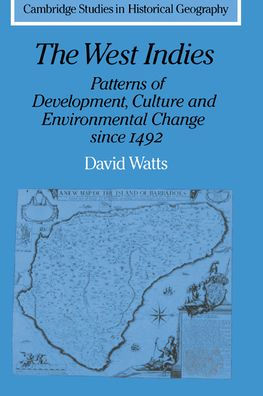The West Indies: Patterns of Development, Culture and Environmental Change since 1492
This magisterial survey of the historical geography of the West Indies is at bottom concerned with the causes and consequences of three complex and inter-related phenomena: the rapid and total removal of a large aboriginal population; the development of plantation agriculture and the arrival of enforced labour, in the form of many thousands of African slaves; and the environmental, ecological and cultural changes that resulted. Dr Watts shows how the initial European vision of a land of plenty has been replaced by an awareness of the geographic and ecological fragiliaty of the area, and explains how the exploitative agricultural systems of the colonial and recent West Indies have not adjusted to the demands of the environment. An enormous array of historical, biological and literary sources are marshalled in support of Dr Watts' analysis, which is likely to remain the standard work on the subject for many years to come.
1100957803
The West Indies: Patterns of Development, Culture and Environmental Change since 1492
This magisterial survey of the historical geography of the West Indies is at bottom concerned with the causes and consequences of three complex and inter-related phenomena: the rapid and total removal of a large aboriginal population; the development of plantation agriculture and the arrival of enforced labour, in the form of many thousands of African slaves; and the environmental, ecological and cultural changes that resulted. Dr Watts shows how the initial European vision of a land of plenty has been replaced by an awareness of the geographic and ecological fragiliaty of the area, and explains how the exploitative agricultural systems of the colonial and recent West Indies have not adjusted to the demands of the environment. An enormous array of historical, biological and literary sources are marshalled in support of Dr Watts' analysis, which is likely to remain the standard work on the subject for many years to come.
76.0
In Stock
5
1

The West Indies: Patterns of Development, Culture and Environmental Change since 1492
640
The West Indies: Patterns of Development, Culture and Environmental Change since 1492
640Paperback(Reprint)
$76.00
76.0
In Stock

Product Details
| ISBN-13: | 9780521386517 |
|---|---|
| Publisher: | Cambridge University Press |
| Publication date: | 03/22/1990 |
| Series: | Cambridge Studies in Historical Geography , #8 |
| Edition description: | Reprint |
| Pages: | 640 |
| Product dimensions: | 6.02(w) x 9.02(h) x 1.57(d) |
From the B&N Reads Blog
